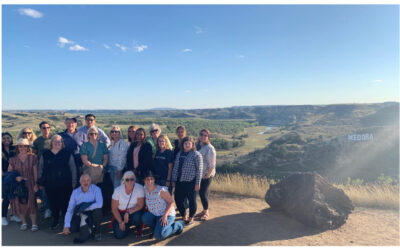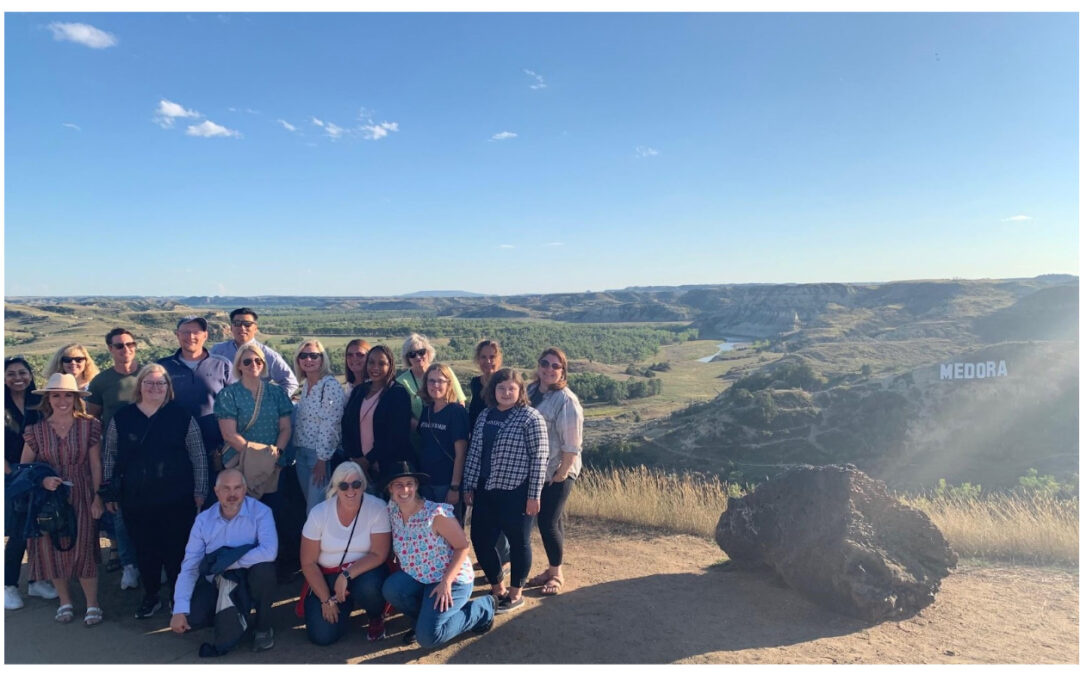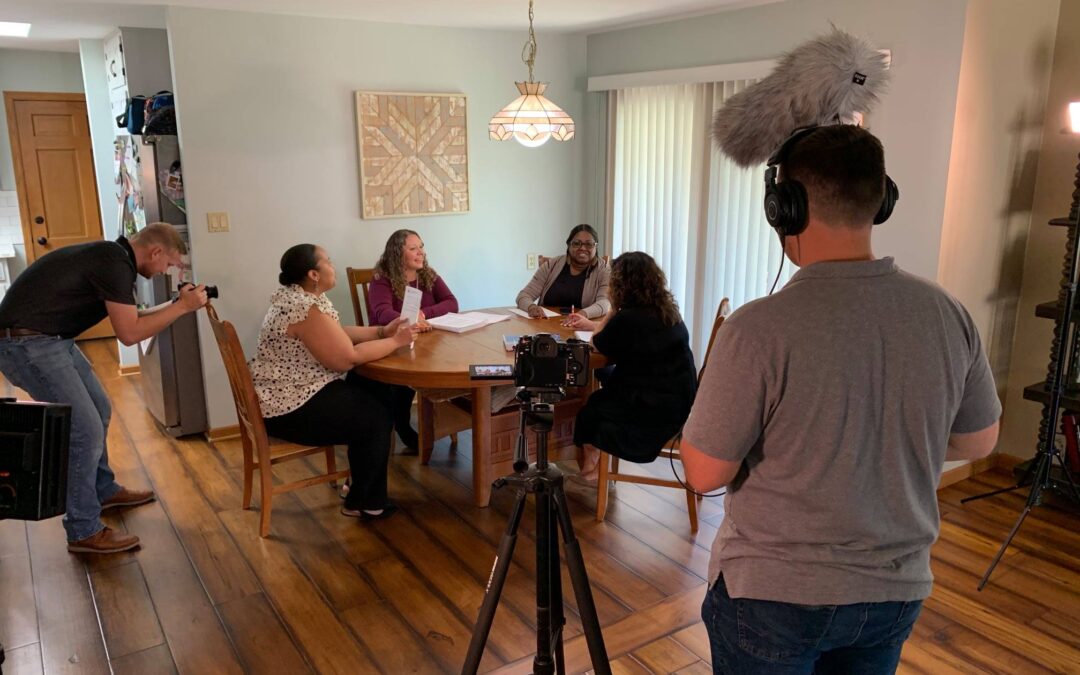Most organizations that receive federal or state funding and even private funding are required to complete some type of needs assessment. This might be part of their grant application or annual program update. The purpose of the needs assessment (which we talk more about here and here) is to help organizations align their services to meet the needs of their targeted population and geographic service area.
Head Start and Early Head Start grantees are one type of grant program that must complete a comprehensive needs assessment every five years as part of their grant application. They are also required to complete an annual needs assessment update. In addition to the local grantees, each state has a Head Start Collaboration Office. They too are required to complete an annual needs assessment based on federal priorities to inform their annual plan and funding priorities.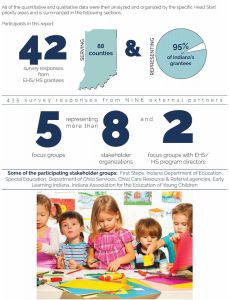
Transform Consulting Group has worked with Head Start and Early Head Start programs at every level from the local grantee level to the state collaboration office and even the federal Office of Head Start. With these partners, we have helped with writing grant applications, managing data systems, completing strategic plans, supporting implementation of new grants, and of course completing needs assessments. Based on our breadth of experience with Head Start, we have some tips to share in how to best complete and leverage your Needs Assessment:
- Gather Quantitative Data
The 5-Year Community Assessment must include a variety of data points such as community demographics, data about Head Start eligible children and families, education, health, social services, nutrition, housing, child care, transportation, community resources, and the list goes on. During the other 4 years of the grant period, local grantees must do a Community Assessment Annual Update. This update includes any significant changes in data around key areas such as the availability of prekindergarten, child and family homelessness, and other shifts in demographics and resources.
- Gather Stakeholder Feedback
We’ve talked a lot about stakeholder engagement in past blogs (here and here). The 5-Year Community Assessment includes gathering input from community partners, parents, and staff. We do this through the use of surveys (electronic or paper), focus groups, and interviews. This is a great opportunity to hear from your key stakeholders, build buy-in and engagement, and strengthen existing relationships.
- Create Visually Appealing Needs Assessment Reports
We pride ourselves on creating visually appealing reports that are user-friendly for all audiences and talk about it in this blog. You can see examples of our Head Start needs assessment reports here and here. We have also taken these reports to create fact sheets about the need for services across different service areas or to summarize the impact / footprint of the Head Start and Early Head Start program.
In more recent years, we have started developing data dashboards that summarize the community needs assessment. Organizations are putting these dashboards on their website like this example here. By doing this, Head Start programs can be a great resource in the community of comprehensive data about young children and families that other partners can use for planning purposes.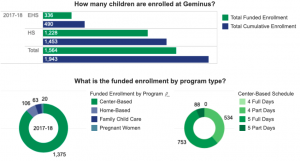
- Share and Use Your Data
After your organization has invested all of this time and effort in completing your needs assessment you want to make sure you use it to drive programming and services. This is where having a visually appealing report, some infographic facts and / or a data dashboard are so important. It makes sharing them internally with your staff and parents, as well as externally with partners, that much easier! We love to share this information at policy council meetings, family events, and community partner meetings.
Does this process sound overwhelming to you? Do you feel like you are in data overload? We can help! You don’t have to do this alone.
Head Start programs, like many federally funded programs, are tasked to track and monitor a lot of data and information especially for compliance purposes. Evidence can be seen of that in the reporting requirements of the needs assessments, along with other state and federal regulations. Most Head Start programs do not have one primary database, so data is often stored in many ways across several systems and staff members. TCG can help review these systems, provide recommendations, assist in analyzing data, and offer training to staff about data systems and best practices around data collection and analysis.
We have the Head Start knowledge and the data expertise to support your needs assessment and data management needs. Consider how TCG can help your Head Start program today. Contact us to learn more!

